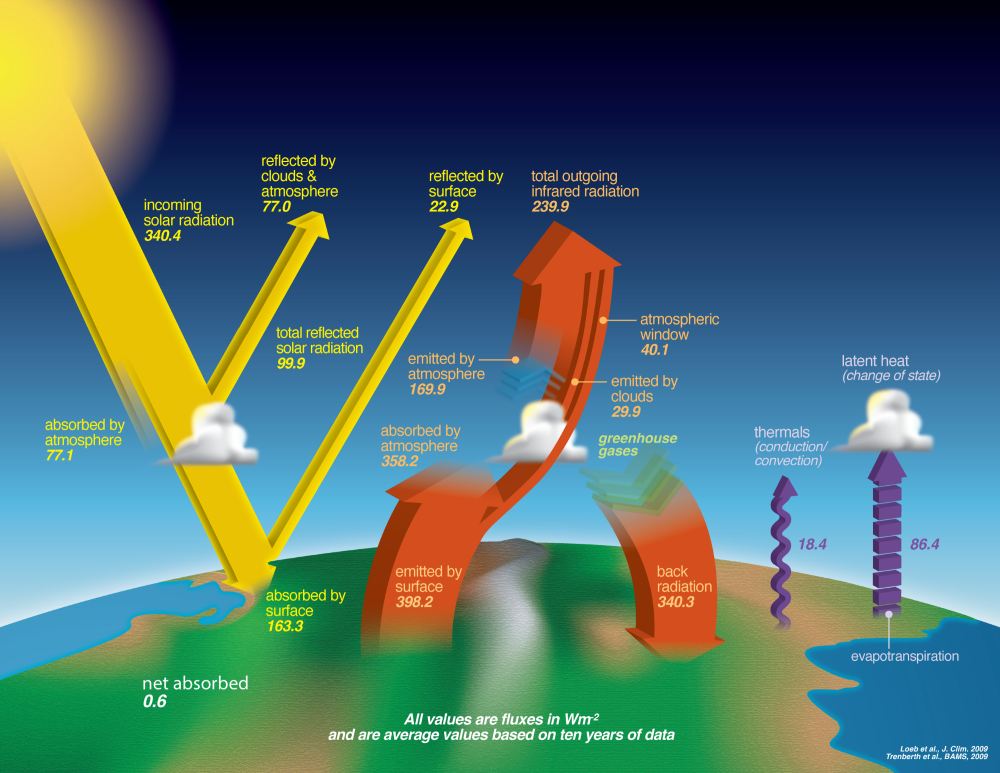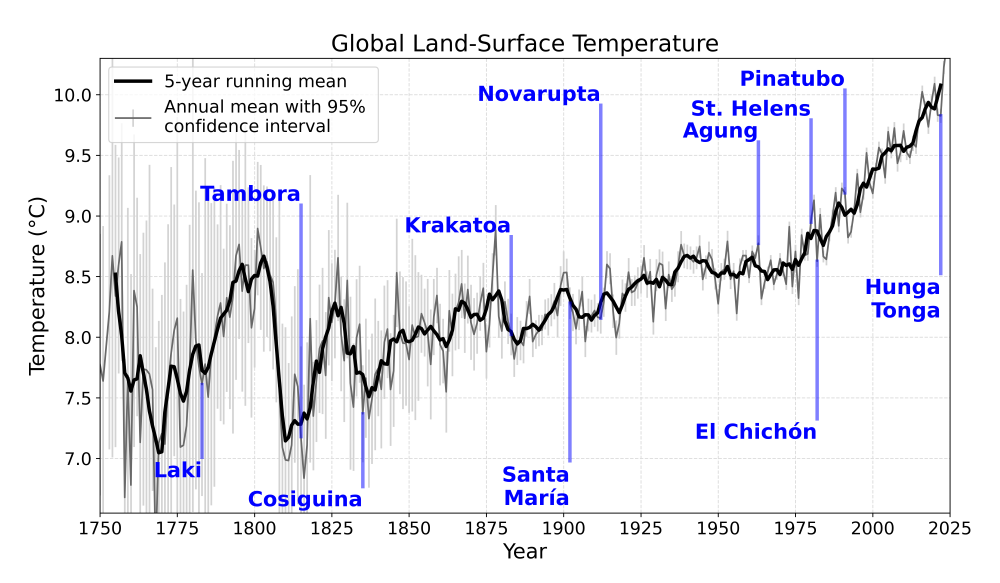Introduction – what are aerosols?
Aerosols are small particles in the atmosphere of both natural and human-made origin. Aerosols can affect the climate by directly interacting with solar radiation (energy in the form of sunlight) (Box 1) and by playing a role in cloud formation and precipitation. How a given aerosol will influence the climate depends on the material it is composed of, its colour, size, and where it is in the atmosphere (i.e., vertical location and whether it is over land or ocean)1.
Natural aerosols include dust, wildfire smoke, volcanic emissions (ash and sulphates) and sea spray2. Human-made aerosols result from industrial activity and the burning of fossil fuels and wood. Two types of aerosols have a notable influence on climate: black carbon and sulphate aerosols. Black carbon is produced when coal, gas and wood are burned. Aerosols containing black carbon tend to be dark. Sulphate aerosols are emitted during volcanic eruptions (Box 2) and the burning of fossil fuels and industrial processes such as smelting. Aerosols comprised of sulphates tend to be light in colour. Darker-coloured aerosols absorb radiation, resulting in atmospheric warming; lighter-coloured aerosols reflect radiation, resulting in atmospheric cooling. Darker-coloured aerosols can also cause additional warming when they settle on snow and ice because they make the surface darker, causing more radiation to be absorbed on these otherwise reflective surfaces.
The length of time that aerosols stay in the atmosphere is known as the residence time. Unlike greenhouse gases, which typically reside in the atmosphere for decades3, the residence time of aerosols is generally between 2 to 30 days, with shorter residence times in rainy conditions and longer residence times in dry conditions. Volcanic aerosols are the exception; they are typically emitted high in the atmosphere and, consequently, have much longer residence times (Box 2). Since most aerosols have short residence times, concentrations of these particles are highest around the sources of emissions. As such, the climate impacts of aerosols are typically confined to local or regional scales.










